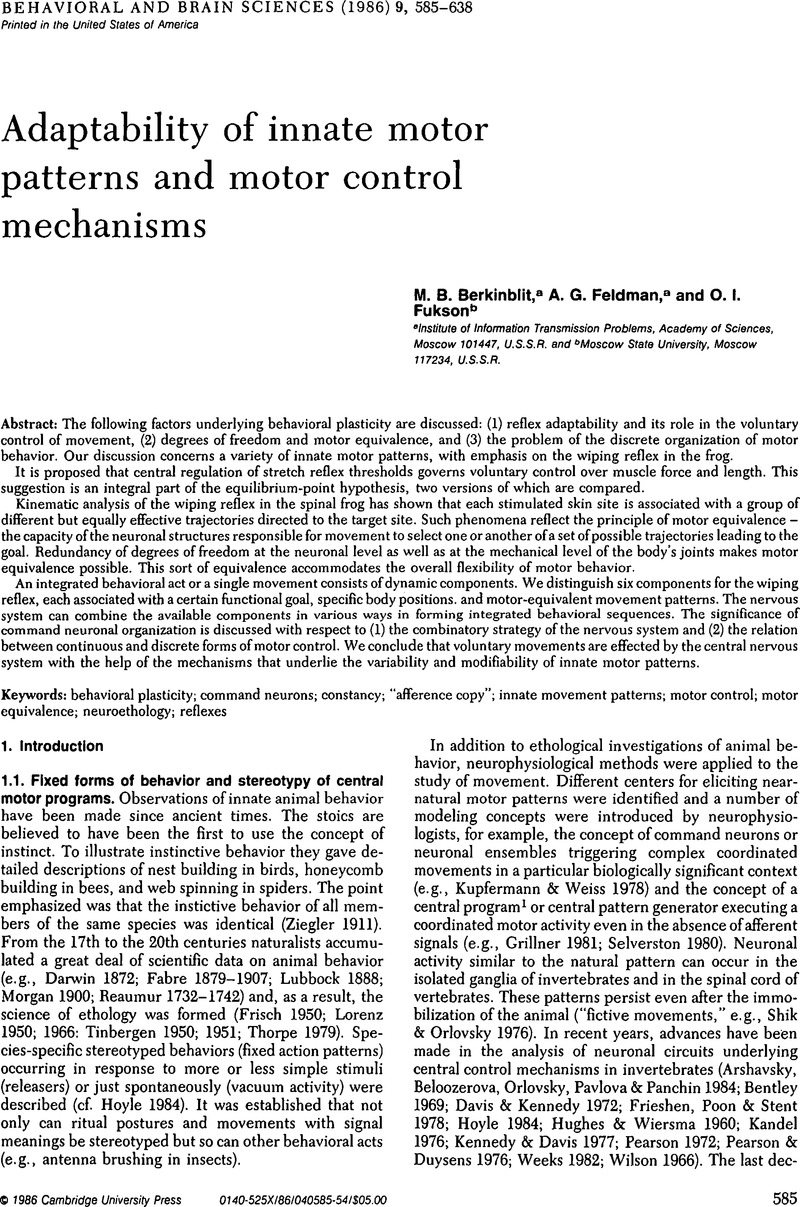Crossref Citations
This article has been cited by the following publications. This list is generated based on data provided by Crossref.
Berkinblit, M. B.
Feldman, A. G.
and
Fukson, O. I.
1988.
The organization and optimization of movement.
Behavioral and Brain Sciences,
Vol. 11,
Issue. 4,
p.
719.
Goldberg, Gary
and
Mayer, Nathaniel H.
1988.
Motor control as adaptational biology: Relevance to education and rehabilitation.
Behavioral and Brain Sciences,
Vol. 11,
Issue. 4,
p.
717.
Schwartz, Andrew B.
2016.
Beyond synergies.
Physics of Life Reviews,
Vol. 17,
Issue. ,
p.
50.



